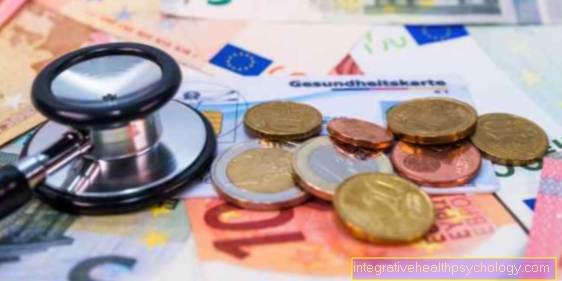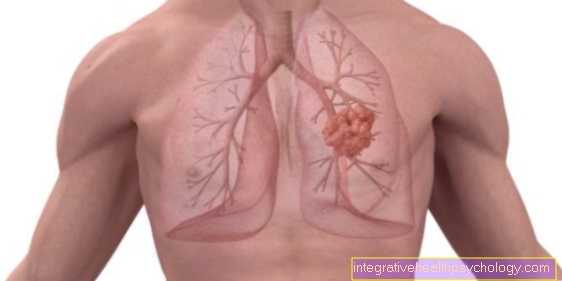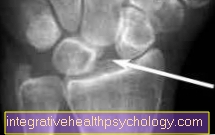coordination
General
The term coordination generally refers to the interaction or coordination of individual processes.
This can be a time coordination of delivery dates of a delivery service provider.
In sport, the term is mainly used in movement science. There the concept of coordination, or also the coordinative abilities, is understood as the interaction of muscles and the central nervous system.
A simple grip on a water glass can serve as an example. The eye sees the glass and sends the information via the central nervous system to the corresponding arm muscles. The hand now reaches for the glass and picks it up. This is the simplest example of coordination in motion sequences.
Coordination is based on movement experience. This means that our brain can remember movements and, in the case of a similar movement, draws on previous experiences. In addition, it is assumed that already made movement experiences in everyday life are applied to sports movements.
Forms of coordination

When it comes to coordination, a distinction is made between intra- and inter-muscular coordination.
Intramuscular coordination refers to the interaction between nerves and muscles.
This is the nerve that leads from the central nervous system to the individual muscle cords and transfers the information from the brain there.
The example with the water glass can be taken up again here.
Intermuscular coordination refers to the interaction of different muscles.
The contracting muscle (the muscle that does work) is the agonist and the relaxed muscle is the antagonist.
To clarify, let's look at the muscles in the upper arm.
The biceps muscle is on the front side of the upper arm and the triceps on the back of the upper arm.
If we lift the upper arm from a hanging position so that a 90 ° angle is created in the elbow joint, the biceps will work and become an agonist. The triceps acts as an antagonist. When the arm is lowered back to its starting position, the biceps changes from an agonist to an antagonist because it is no longer doing any work. The triceps are now contracted and working, and therefore go from antagonist to agonist.
This interaction of the muscles can be observed all over the body. The coordinative skills or coordination is therefore a performance requirement for coping with simple movements in everyday life, but also very complex sports movements. How large the part of coordination is in a sporting performance can hardly be measured and proven.
Basics of coordination
The basic idea about coordination is that im brain so-called Exercise programs that is used for certain requirements in order to solve a coordinative task.
Let's look again at our glass example from the beginning and consider this movement as saved program.
A new task is to pick a blade of grass from a meadow. The brain makes use of the “glass” exercise program and also takes Adjustments in front. A blade of grass is thinner and harder to grip than a glass. The requirement is therefore slightly modified in terms of coordination. If the movement is carried out successfully, our brain saves this modified movement again.
Thus gradually a Repertoire of exercise programs in all areas of life, whether everyday or sports.
This process can be simplified as a Control loop model represent.
The structure consists of:
- a target
- a controller
- a movement execution
- an information processing
- storage in movement memory
These terms are explained step-by-step and with examples in order to illustrate the mastery of coordinative movement and to understand how the brain works with movement programs.
As Target will the Movement task seen that must be faced. This can be a penalty kick in football, for example.
The objective should be carried out as successfully as possible. In our case, scoring a penalty is the best possible solution to the problem. The brain now checks whether it has saved appropriate movement programs for this task and accesses them.
This already falls under the concept of control.
A stored movement sequence is called up and the information is transferred via the central nervous system sent to the corresponding muscles.
In the phase of Movement execution two processes happen.
The Environmental influences are included in the movement and the execution of the movement begins. In our example, environmental influences are:
- the nature of the subsoil (lawn)
- Weather influences such as wind and rain
- Spectator noise
- Heckling
The execution of the movement can be influenced by these environmental influences. The movement execution now begins and the run-up must also the stride length, the position of the ball, the starting speed, the target ability and the planned Impact force be coordinated.
Many coordinative processes are running at the same time in order to enable successful management. The movement has been carried out, the ball has been shot and hit the right post into the goal out. The Target has not been reached and immediately afterwards the starts in the control loop model Failure analysis.
This happens with the Information processing. The brain retrospectively analyzes the movement and determines that the penalty kick was not taken precisely enough.
Whether the target ability of the shooter or the environmental influences were decisive cannot be exactly clarified. The brain saves the movement pattern and notes that the target was not achieved. When the movement is called up again, a change is made in order to ensure that the problem can be dealt with successfully in the future.
With the Storage in movement memory the control loop for coordinative skills closes. By applying this principle, people learn to solve coordinative tasks and at the same time train their coordinative skills.
Coordinative skills
It became clear that coordination consists of action programs with which tasks can be processed in a situation-appropriate manner.
coordination, or the coordinative skills are made up of seven different skills.
These are:
- the ability to differentiate
- the orientation ability
- the ability to balance
- the responsiveness
- the ability to rhythmic
- the coupling ability
- the ability to adapt.
The ability to differentiate enables fsome movement coordination relating to space and time.
Orientation enables the body to always know which one location he is located.
The ability to balance is understood as the achievement of a state in which the body is in the balance is located, or can reach it again and again.
Responsiveness are the ability to be appropriate at any given time speed to a Respond to signal to be able to.
The ability to rhythmic is understood to mean a movement on from Outside or Inside given rhythms adapt.
The coupling ability makes that possible Merging of individual and partial movements to a targeted overall movement.
Adaptability makes this possible Adjusting exercise programs to changing circumstances.
These different skills make up coordination and influence the learning and execution of movements.
Coordination measurement
As already mentioned, coordination is difficult to measure and scientifically proven.
The indicators for coordination are therefore in particular the precision, or the movement precision and the Economy, or the economy of movement used.
The economy deals with the economics a movement. The best possible result should be achieved with the economical use of resources. Several different methods have been used and developed to measure coordination.
The Electromyography is a method with the smallest Tensions and Voltage fluctuations can be measured in the muscle. This allows an interaction between central nervous system and muscle can be detected.
There are also a number of sports motor tests to determine general coordination. The "Vienna coordination course" from 1976 to be presented. He sits out eight tasks together:
- Roll back and roll forward
- 1 rotation around the longitudinal axis of the body
- Long bench balancing
- Figure eight by two marks
- Slalom rolls of a medicine ball
- Cross jump combinations
- Cart hopping
- Obstacle climbing on parallel bars
This test is best suited for young adults and involves coordination under time pressure and with precision requirements. The course is run through twice for a time and the faster attempt is scored. 35 seconds for men and 38 seconds for women they meet the minimum requirements to be met.
Summary
In summary, the coordination as complex athletic movement control process to understand the like one Control loop model works and in seven coordinative skills can be divided.
We encounter coordination in every day-to-day movement, but also in all sporting areas that involve movement execution and control





























